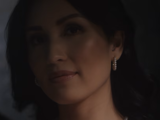When the lights and cameras, are ready, it’s important to know who is driving the action. Both photographers and cinematographers are key figures for multimedia projects, but there are some notable differences that affect their work.
Both professions have the same basic goal – to manipulate light in a way to capture images that achieve a specific look and feel. In short, they know how to make the marketing materials you see online, on TV, and other places look good. Of course, there is one key difference between the two – a cinematographer’s assets move while a photographer’s images don’t.
That distinction is pretty simple, but it makes a massive impact on a project. The introduction of motion adds quite a few complications that impact just about every step of a project. Let’s break down some of the changes that capturing motion puts into, well, motion.
Lighting
You’re going to struggle with the cameras and action without the right lights. One of the major differences with capturing video is that you need continuous lighting. Unless you’re filming outside and just have a beautiful day with perfect natural light, that means you’re going to need HMI, tungsten, or LED lights in studio.
The challenge with continuous light is that it takes a lot more physical support. A video crew will need to set up more lights, stands, flags, and other lighting equipment to properly light a scene. The lights used for video also tend to be bigger and heavier than the strobe lights favored for still shots.
Lighting for photography is a little simpler, at least in terms of the equipment. You can light a room more quickly with strobes since you can pick and choose what to light and crank up the power to help the camera capture everything you need. It still takes expertise to capture the right look and feel, but lighting sets for images doesn’t require as many heavy items or planning.
Focus
Another major difference between photography and cinematography is keeping the image in focus. For a still shoot, the camera’s focus is generally controlled by the photographer, wether through manual or autofocus depending on the subject. When motion is added to the mix for a video project, the focus may have to follow the action of the shot; potentially at the same time as a complex camera move. Because of this there will likely be a camera assistant whose entire job is to pull focus as the camera or the subject moves.

Crew
Somebody has to move all that heavy equipment (and help with other important tasks as well). For still photography, there’s typically a photographer, an assistant, and a digital tech depending on the size and scope of the project. Simply put, video crews are going to need more people.
Video crews are bigger for more than just the extra lights and other equipment. There are so many moving parts on a video shoot that it’s mentally exhausting to have one person cover too many tasks (not to mention just a bad idea overall). The extra assistant directors, camera assistants, and other people help ensure that there are enough people to pay attention to all the moving parts while the video shoot is in motion.
Approach
Both photographers and cinematographers are wizards at manipulating light, but they typically follow different approaches to making that magic happen.
Photo projects typically follow a shot list to dictate what stills need to be captured. This list will give photographers an idea of how many shots needs to be taken, the shot dimensions, and other pertinent information. These lists can help photographers try and capture as much as possible in a single shot while keeping track of everything needed for a successful photography session.
While some simpler video projects may be able to operate off shot lists alone, there’s usually a lot more nuance when it comes to working with video that can require a different approach. A lot of video projects and some more complicated photo shoots will have story boards and scripts to plan out a narrative for the finished assets.
Cinematographers also need to vary their shots for video. You can’t shoot everything wide or have a dolly shot move to the right for every part of a video – unless the goal is to make a boring, repetitive video, of course. Cinematographers need to be able consider the order of every shot and piece everything together like a puzzle, except this puzzle moves and must look great.

Pre-Production and Post-Production
As you may expect, projects with more moving parts will typically require some extra planning. Video projects will typically require extra time and effort before the actual shoot, both because of the extra moving parts and some additional steps that won’t impact photo projects. For example, it simply takes longer to review casting reels and find talent that can walk and talk in just the right way, in contrast to reviewing stills in a web gallery.
Set preparation is another notable factor. Everything will show up in video, whereas you can hide certain parts of a set in photos or choose to add details in post-production. It’s not too complicated to add a background in a window or touch up some unfinished aspects of a set for stills, whereas doing the same thing for a video in much more time-consuming and expensive. As such, video projects will likely need more building and lighting time to make sure everything looks as good as possible on camera right away.
Cost
Every project is different, but creating a video is generally going to be more expensive than photography. It’s pretty hard to say exactly how much more one is than the other because it can cost anywhere from a few thousand dollars to more than $100,000 for both video projects and photo projects depending on your scope.
You’ll need to work with a multimedia studio to go over all your needs for an exact estimate. The good news is that TRG is the perfect place to start. We are a one-stop shop for national and international brands that need a lot of content, and need all that content to look good no matter what platform they’re for. Contact us today to find out how we can help you achieve all your photo, video, and CGI needs.









